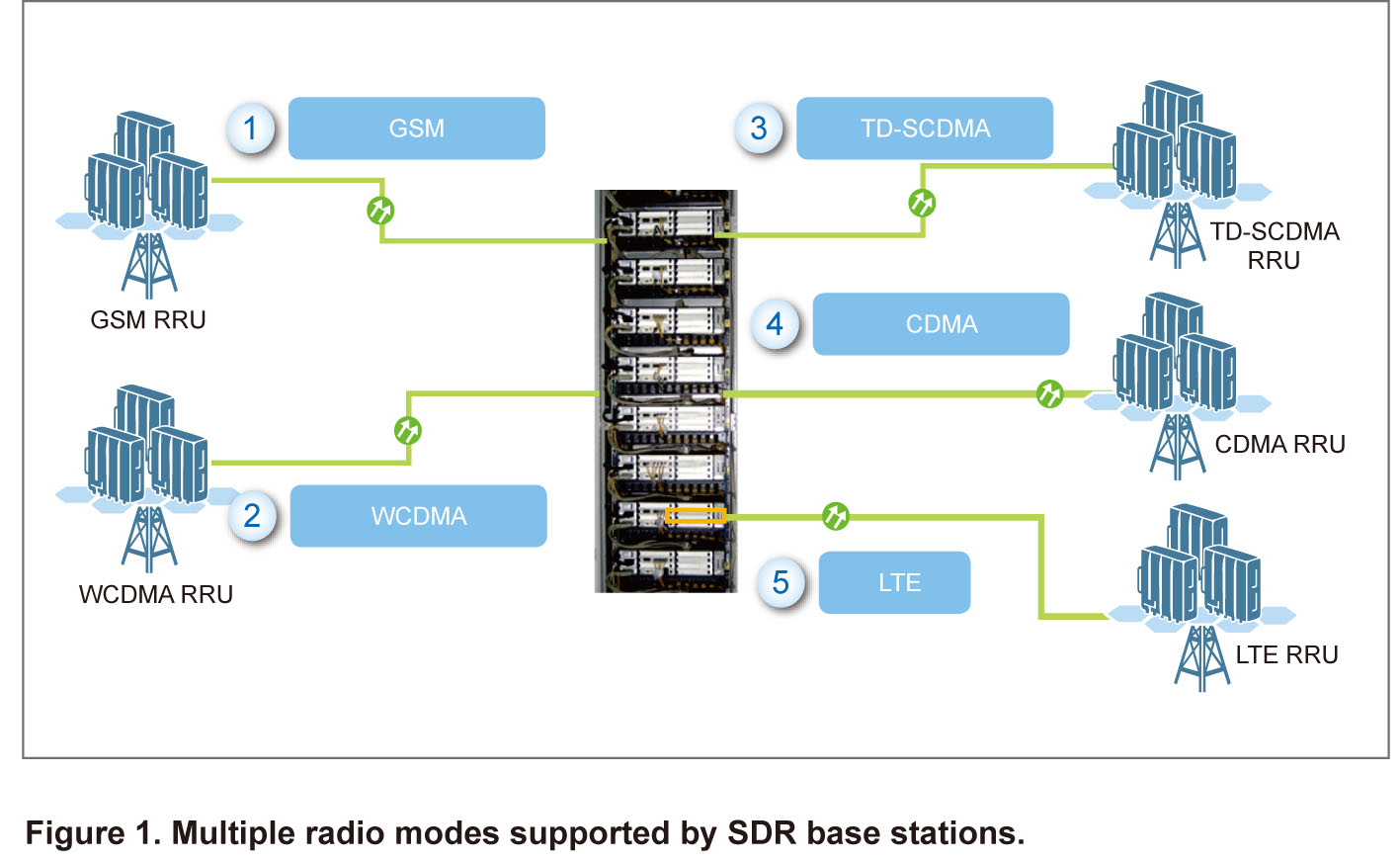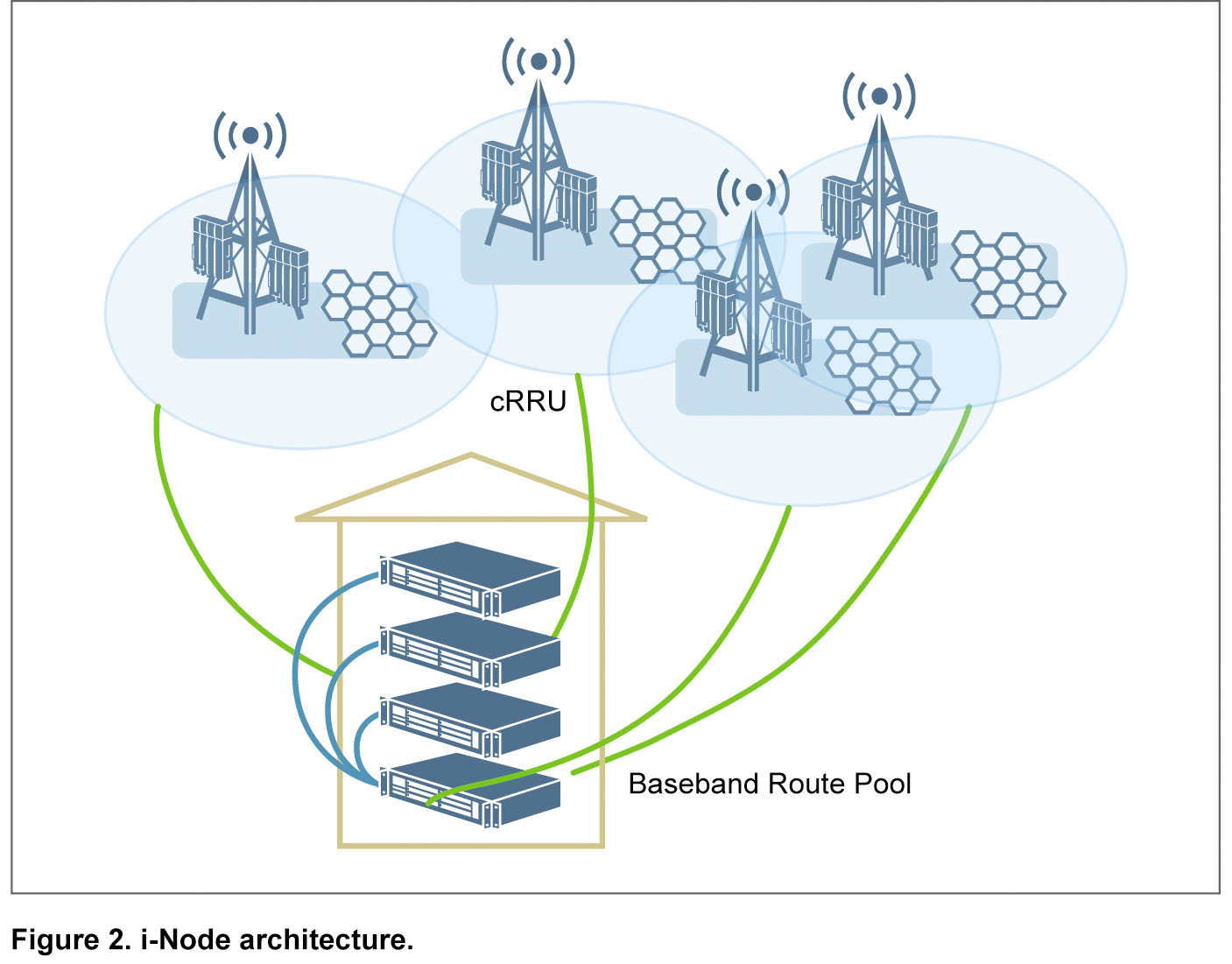Next-Generation SDR: The Choice for Future-Oriented Radio Networks
As the global information industry grows rapidly, the need for intelligent mobile broadband services is soaring. An important strategy for improving profitability and enhancing core competencies is to create a sustainable choice 3G network. This involves fast network deployment and early service rollout in order to gain a favorable position in the 3G market. It also requires networks to be evolved with new future-oriented technologies that guarantee service continuity and protect operator investments.
Software Defined Radio (SDR) base stations allow different radio technologies to operate on one platform through software configuration. This increases compatibility among different technologies and enables smooth network evolution. For a full-service operator, the advantage of SDR base stations is that they allow multiband multimode operation and continuous TCO reduction.
Future-Oriented Platform Strategy
ZTE has developed a series of SDR base stations on a uniform MicroTCA platform so that equipment can be easily standardized. The MicroTCA architecture provides an excellent platform for building an economical, flexible, and highly reliable 3G network. It supports GSM, CDMA, WCDMA, TD-SCDMA, and LTE, allowing multiband multimode operation. With MicroTCA architecture, SDR base stations are smaller, consume less power, and have more processing power.
ZTE’s SDR base station RF units are software-programmable and redefinable. They enable intelligent spectrum allocation and support multiple standards. The RF unit adopts broadband multicarrier digital signal processing technique, and a single power amplifier supports multiple carriers. The capacity of an SDR base station can be smoothly expanded through software configuration. Thus, the cost of expansion is reduced and the impact caused by network expansion is reduced. 2G, 3G, and LTE can coexist on a continuous 20MHz band through software configuration so that RF signals of multiple modes can be transmitted and received simultaneously. In this way, convergence and evolution of multiple modes are realized on one band.

Flexible Networking for Coverage in Different Scenarios
With a widely applicable architecture, SDR base stations allow operators to choose proper equipment structure and networking mode in order to meet coverage needs in various scenarios.
Macro base station structure
Macro base stations can be cascaded to meet large-capacity networking needs. MicroTCA architecture and multicarrier technique can bring about larger capacity from smaller size. A macro base station consists of a primary cabinet to which extended cabinets can be added. In this way, capacity is easily expanded. The primary cabinet and extended cabinets can share a baseband pool, the configuration is flexible, and expansion is smooth.
Distributed base station structure
Distributed base stations meet the need for fast network construction when equipment room is limited. For a distributed SDR base station, the baseband unit (BBU) and RF unit are separate so that the base station is not confined to the equipment room. The BBU does not require independent room space, and can be installed in a transmission rack, in the surplus space of other equipment, or directly on the wall. This is an effective solution when room space and bearing capacity are limited. The remote radio unit (RRU) is small and lightweight, and can be mounted on a pole, a wall, a platform, or a tower, free from the restrictions of the equipment room and supporting facilities.
Super baseband cluster
ZTE proposes an innovative “super baseband cluster” solution, in which BBUs are installed in a centralized way and RRUs are deployed remotely through fibers to achieve flexible coverage. Many BBUs can be cascaded for dynamic allocation and flexible scheduling of baseband resources. Thus, system resources are fully utilized and the vacancy rate of network assets is reduced. With the advantages of low power consumption, high efficiency, and easy engineering, RRUs can be flexibly deployed. This saves on civil engineering work and capital costs. Common Public Radio Interface (CPRI) provides strong interfacing capability, which simplifies local transmission network structure and extends the coverage of RRUs.
Multiple BBUs can be installed in an existing equipment room—such as the core or backbone equipment room—so that new rooms are not required. Supporting and transmission resources in the room can be shared to the fullest extent ensuring existing resources are used efficiently and network construction and maintenance costs are saved. This represents a revolution in the conventional network model.
A networking model with a super baseband cluster meets requirements for macrocell coverage in densely populated urban areas as well as less populated urban, suburban, and rural areas. Microcell coverage is supported for urban hotspots and CBD areas; and indoor deep coverage is supported for large stadiums, office buildings, conference centers, and expo centers. Spot coverage for high-speed railways, flyovers, bridges, subways, tunnels, and scenic resorts is also supported by this model.
Building Economical Networks Through Technological Innovation
Building an economical network with reduced resource occupation and energy consumption is an effective approach to better profitability.
The power amplifier in ZTE’s SDR base station adopts innovative “DPD+Doherty+DPA” technology. With power amplification of up to 45%, it is an industry leader in efficiency. The receiving sensitivity of dual antennas can reach up to -129.2dBm, increasing the coverage area of a single base station by 39% and reducing the number of sites by 28%. Energy consumption is cut down substantially. On a conventional site, 73.7% of energy consumption can be attributed to air conditioning. However, by employing the super baseband cluster model, BBUs share air conditioning in the core equipment room, and energy consumption is minimized. Compared with the conventional site model, the super baseband cluster model reduces overall energy consumption by more than 88.5%, and the engineering cycle is 33% shorter per site.
Smooth Evolution and Sustainable Development
ZTE’s SDR base stations allow 2G and 3G equipment to coexist on one site so that 2G and 3G networks can be converged into one network. This simplifies structure and improves network quality. Moreover, the SDR base station supports HSDPA, HSUPA, and migration to HSPA+ (64QAM) through software upgrade without any alteration to hardware. To support MIMO, only one RF unit is added to each sector. For smooth evolution from HSPA/HSPA+ to LTE, only processing boards for the control and user planes are added to the hardware platform. This protects operators’ existing investments and reduces LTE construction costs.
As radio technology evolves to LTE, the wireless networking model has evolved from single base stations to super baseband cluster, and will further evolve to i-Node―the next generation radio access network architecture. The strengths of centralized resource allocation and distributed radio deployment are many; and drawing on these strengths, radio networks may increase in high-speed data service capability. i-Node offers distinct advantages in intelligent scheduling of baseband resources, collaborative management, and internetworking. The remote units use intelligent RF technology to reduce interference and increase spectrum efficiency. i-Node also supports multicell collaborative radio resource management, multicell collaborative radio signal processing, and intelligent scheduling of radio resources. Using standard all-IP architecture, i-Node allows internetworking of communications devices, conforms to the future cloud computing model, and enhances network throughput.

ZTE’s next-generation SDR base stations with innovative architecture are used to build state-of-the-art networks without the need to change any hardware. This helps operators make effective use of existing network resources and greatly reduce TCO. Network growth strategies can be quickly and flexibly adjusted to meet changing markets, and investment risks can be controlled while maintaining network competitiveness and profitability. Next-generation SDR base stations and the innovative networking model are inevitable trends for future network development.